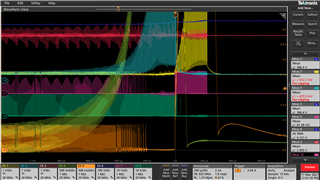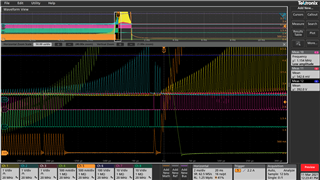Dear TI support teams:
I have designed an AC/DC converter using UCC28070. There is a start-up in-rush current issue. The design is:
CDR tied to VREF
RDM tied to GND
Current Sensing resistor is 26 ohm for both CSB and CSA.
PKLMT is set to 3V with two 6.8kohm resistors divider, plus a filter capacitor.
SS tied to a 4.7uF cap
PFC inductor is bypassed by a in-rush diode
NTC resistors have been implemented to limit the in-rush current.
The whole design is merely following the TI reference PMP4311 but with switching frequency 200kHz. All the other parameters are calculated with TI spread sheet.
The in-rush current shoots upto 60A even when start up at no load or light load. The pulse on CSB and CSA are way beyond 3V on PKLMT, but no pulse-by-pulse limit took place!
Any help or suggestions are highly appreciated! Thanks



